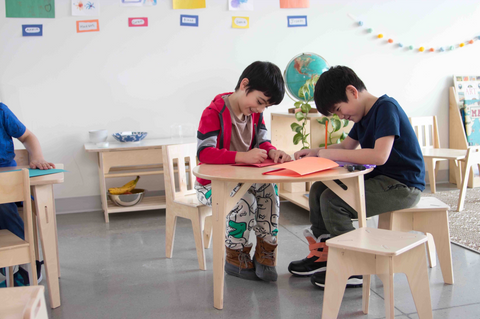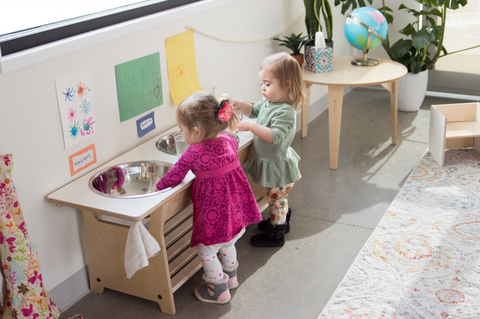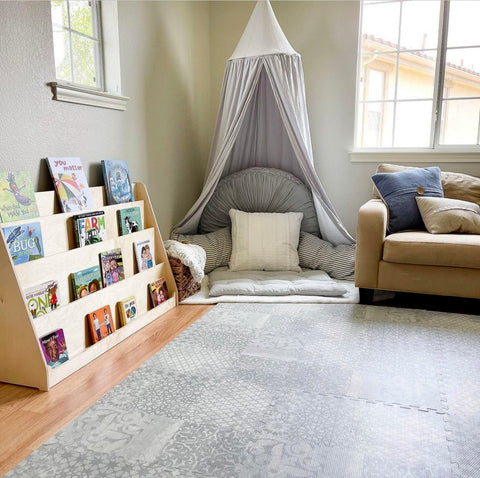Child-Centered Early Childhood Education
Montessori and Waldorf education are two prominent methods of early childhood education. They are both holistic philosophies that focus on child-centered education, nurturing children’s natural curiosity and independence. There are also key differences that distinguish the two approaches.
How are Montessori and Waldorf similar, and how do they differ?
Similarities
Montessori and Waldorf both prioritize following children’s natural development and individual growth. Both philosophies promote learning through hands-on experiences and exploration.
Montessori and Waldorf classrooms are filled with natural materials that are attractive to children and create warm, nurturing environments.
In both Montessori and Waldorf schools, you’ll find little to no technology in classrooms and no homework. Children stay with the same teacher for more than one year, allowing them to develop strong relationships with the adults in their school environment over an extended period of time.

Differences
Montessori
When entering a Montessori classroom, you’ll find a light-filled space with open shelving and wooden furniture. Materials on the shelves are carefully prepared by the teacher for independent exploration by children. In Montessori schools, core academic subjects (reading, writing, math, and science) are introduced in preschool, around age 3.
Maria Montessori is quoted as saying “Play is the work of the child.” In Montessori schools, play is seen as a means to explore and learn about the world. Materials in Montessori classrooms are designed to be educational and have a clear developmental purpose. Core subjects are taught through materials designed to be self-correcting and explored independently.
In Montessori preschools, children are given individual lessons on materials from the teacher, who acts as their guide through the environment. Children interact with and manipulate materials independently during a dedicated 3-hour work cycle, meant to feel endless so that they have the freedom to truly immerse themselves in an activity without feeling rushed.
Montessori preschools and elementary schools feature mixed-age classrooms with a 3-year age span. Students stay with the same teacher in the same classroom for 3 years and then move on to their next 3-year classroom once they have completed that cycle. They get to experience being the youngest child learning from older children at the beginning of their 3-year cycle, then experience being the oldest child teaching younger children at the end of their 3-year cycle, after which they begin the process again in their next classroom.

Waldorf
Upon entering a Waldorf classroom, you’ll find a warm, cozy environment that is filled with artwork, handcrafted objects, textiles, and materials from nature. The walls of the classrooms correspond to the developmental stage of the children: classrooms for younger children are painted in warm colors, and the colors change to cool hues as children age.
In Waldorf schools, core academic subjects are introduced in elementary school, around age 7. But this doesn’t mean that children are not indirectly learning about these topics in preschool! While core subjects are not taught explicitly in preschool, they are integrated into artistic, creative, and practical activities throughout the day. Children spend a lot of time outside in nature, exploring and learning about the world around them.
In Waldorf schools, there is a focus on creative and artistic activities. Imaginative, open-ended, unstructured playtime is encouraged and seen as the way that young children develop skills and learn about the world around them. The day in a Waldorf classroom alternates between teacher-directed group lessons and a story or circle time, and independent exploration, including a lot of time spent outdoors in nature.
Waldorf teachers follow a cohort of students for 5-8 years, moving up with them as they grow and allowing them to develop strong bonds. Waldorf teachers tell elaborate oral stories to their students that can extend over several weeks to a month, which the students then act out, allowing children to immerse themselves in the story and use their imagination to deepen their understanding of the world around them and explore their creativity.

Photo: @themontessorislp
Montessori and Waldorf education are both established methods of early childhood education, and both are very popular with families seeking child-centered education for their children. The two methods aren’t mutually exclusive; many families will start out at a Montessori school, and then send their child to a Waldorf school, or vice versa.
Have you ever been inside a Montessori or Waldorf school? What did you notice about the environments?
Another approach to education is the Pikler Approach, founded by Dr. Emmi Pikler. If you're interested in learning more, we also have an article that highlights the backgrounds and methods of Montessori and Pikler.







